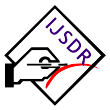Imp Links for Author
Imp Links for Reviewer
Research Area
Subscribe IJSDR
Visitor Counter
Copyright Infringement Claims
Indexing Partner
|
Published Paper Details
|
|
| Paper Title: | Determination of Automotive Brake Disc Thickness Variation To analyses Judder Issue |
| Authors Name: | Rahul Badgujar , Anand Relkar , Amol Lokhande , Jigar Bhavsar , Snehal Patil |
| Unique Id: | IJSDR2207091 |
| Published In: | Volume 7 Issue 7, July-2022 |
| Abstract: | Now a day’s Vehicles are becoming more powerful and resulting high speed. But due to road limitation sudden braking is also repeated in RWUP condition and because of that minor variation in brake disc causes vehicle brake juddering and results in driver discomfort & poor confidence. It is directly affecting on business performance. Even though advanced technologies are available in market still it is impossible to designed brake disc with zero variation. Vehicle juddering has become of major concern to automobile manufacturer world wide and braking performance not consistent due to brake disc variation. Brake Pad that will enable engineers to better understand the causes of DTV & Stick-slip the initiator of low & high frequency vibration in motor vehicle brake. DTV is caused by disc brake pad wearing the brake disc, at their point of maximum run-out through continual light rubbing whilst the brake of the vehicle is not applied, thus wearing two relatively thinner areas of the disc- one on each rubbing face- at diametrically opposite points. If sufficient thickness variation is generated in the region of 10 to 20 µm the vehicle will judder at the time of braking. The precise Threshold value varies from model to model being dependent upon the general compliance built into the vehicle’s braking and suspension and steering systems. Brake judder experienced due to DTV is termed cold judder since it does not depend on the distortions of the brake disc and/or resin deposition from the face of the disc during high thermal inputs. The brake disc run-out the installed values of the run-out depend upon many factors associated with design and build quality of the vehicle such as the square ness of the disc hub interface, the fastening of the rotor to the hub, the machining accuracy and deflation of the stub axle, the type of the wheel bearings that are used etc |
| Keywords: | Brake pressure variation, brake vibrations, cold judder, disc thickness variation, disc brake, hot judder, judder. |
| Cite Article: | "Determination of Automotive Brake Disc Thickness Variation To analyses Judder Issue", International Journal of Science & Engineering Development Research (www.ijsdr.org), ISSN:2455-2631, Vol.7, Issue 7, page no.612 - 618, July-2022, Available :http://www.ijsdr.org/papers/IJSDR2207091.pdf |
| Downloads: | 000337067 |
| Publication Details: | Published Paper ID: IJSDR2207091 Registration ID:201044 Published In: Volume 7 Issue 7, July-2022 DOI (Digital Object Identifier): Page No: 612 - 618 Publisher: IJSDR | www.ijsdr.org ISSN Number: 2455-2631 |
|
Click Here to Download This Article |
|
| Article Preview | |
|
|
|
Major Indexing from www.ijsdr.org
| Google Scholar | ResearcherID Thomson Reuters | Mendeley : reference manager | Academia.edu |
| arXiv.org : cornell university library | Research Gate | CiteSeerX | DOAJ : Directory of Open Access Journals |
| DRJI | Index Copernicus International | Scribd | DocStoc |
Track Paper
Important Links
Conference Proposal
ISSN
 |
 |
DOI (A digital object identifier)
  Providing A digital object identifier by DOI How to GET DOI and Hard Copy Related |
Open Access License Policy
Social Media
Indexing Partner |
|||
| Copyright © 2024 - All Rights Reserved - IJSDR | |||






Facebook Twitter Instagram LinkedIn